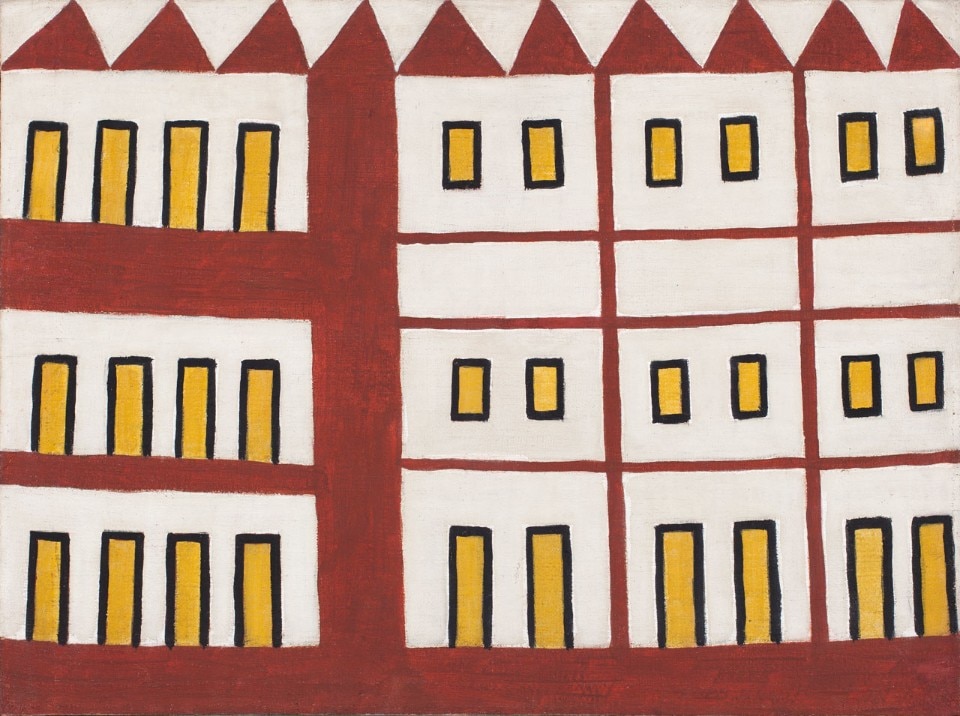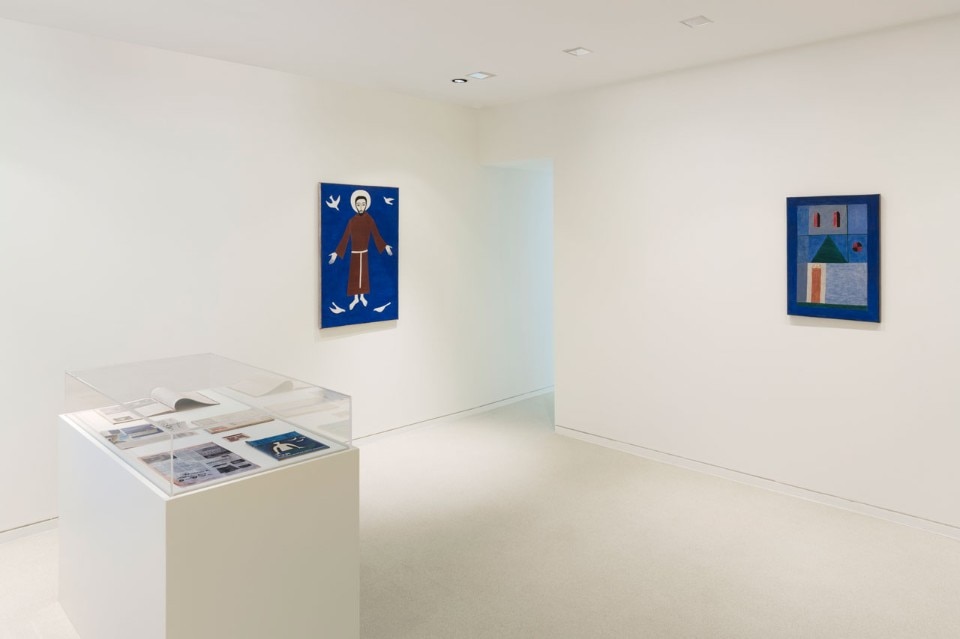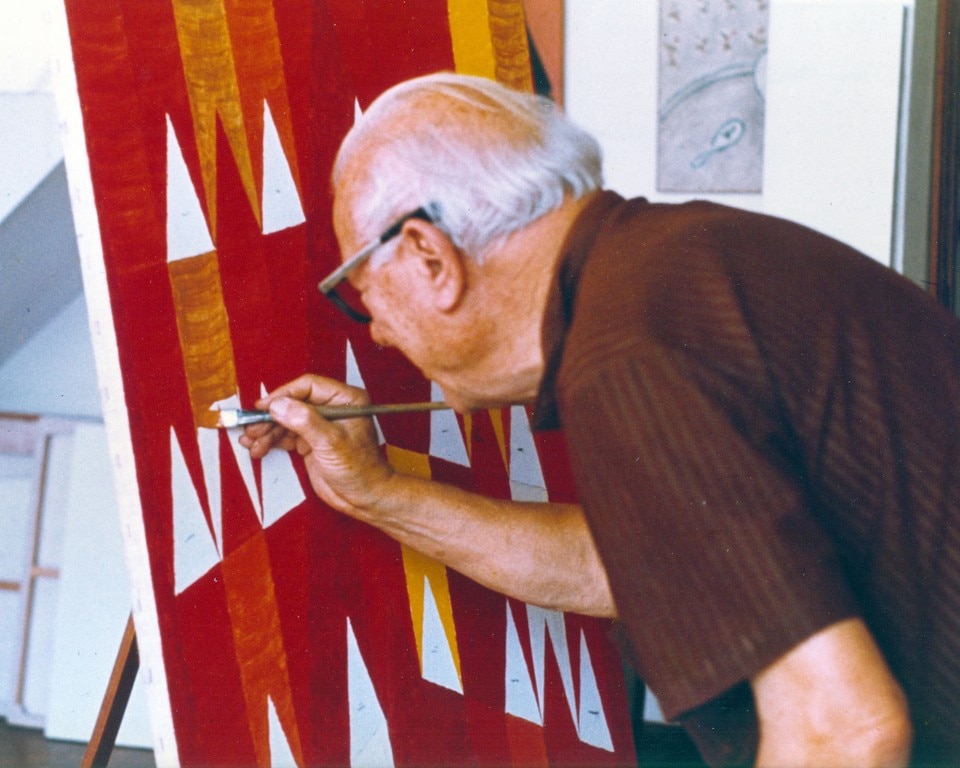“La poétique de la couleur” at the Nouveau Musée National de Monaco is the first European retrospective dedicated to the work of Alfredo Volpi (Lucca, 1896–São Paulo, 1988). We asked the curator Cristiano Raimondi to tell us about the figure of this great artist, as well as certain aspects of the exhibition: from the ties that the artist had with architecture, to his relationships with local Modernist architects such as Oscar Niemeyer.
As with any artistic journey, his production is linked to personal experiences and to the historical and social context in which he worked. How and when did you come into contact with the work of Alfredo Volpi? Can you tell us something that struck you in particular about the figure of Alfredo Volpi?
I discovered Alfredo Volpi’s work in 2014 while I was in Brazil for a research project. Thanks to the Volpi Institute and the Almeida and Dale Gallery I was then able to get in touch with numerous “Volpistas” (this is the name with which the most important collectors and friends of Volpi are known). If you visit museums and art collections anywhere in Brazil, you are bound to come across examples of Volpi’s work: he is considered a national treasure. However, he never renounced his Italian passport, even if he came to Italy for the first time in 1950, at the age of 54. Born in Lucca in 1896, he left Italy when he was only two years old. He settled with his family in Cambuci, a suburb on the outskirts of São Paulo, at the time considered a Little Italy. Of humble social background, he didn’t study in academies, but worked as a cabinet maker, and then as the assistant to a painter who decorated the villas of the new middle classes with frescoes and murals of an academic or retro style. In 1950 the tile manufacturer Osirarte, founded by the artists and architect Paulo Claudio Rossi Osir invited Volpi and another artist, Mario Zanini, to go on a Grand Tour in Italy. For Volpi his new points of reference became Giotto, Cimabue and Margheritone d’Arezzo. The two-dimensionality and the pictorial composition of the Byzantine and early Renaissance style became a point of reference in the construction of a modern language which was however rooted in popular culture. On his return from Italy, and after having studied various techniques for the preparation of tempera, he abandoned oil painting. For Volpi, his journey in Italy had had the same effect on him as Morocco had had for Matisse. From that moment on, Volpi was to develop a singular language, using as his main subjects the facades of popular buildings in Cambuci, the bunting from the festas juninas, lances and standards. His painting is a métissage of cultured references, archetypes and an innate sense of colour. Until four years before his death, he never stopped painting his variations on a theme.
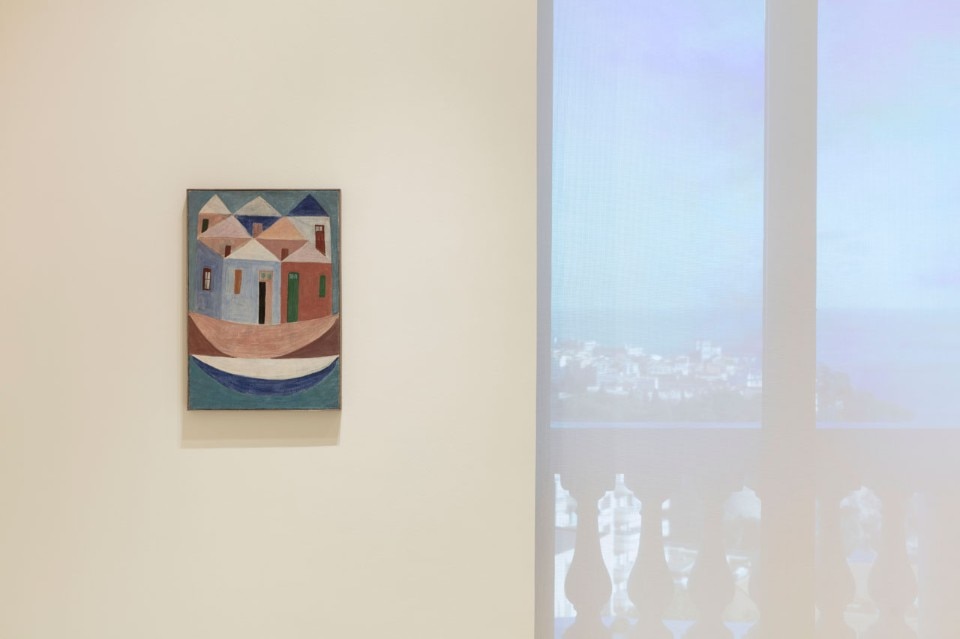
 View gallery
View gallery

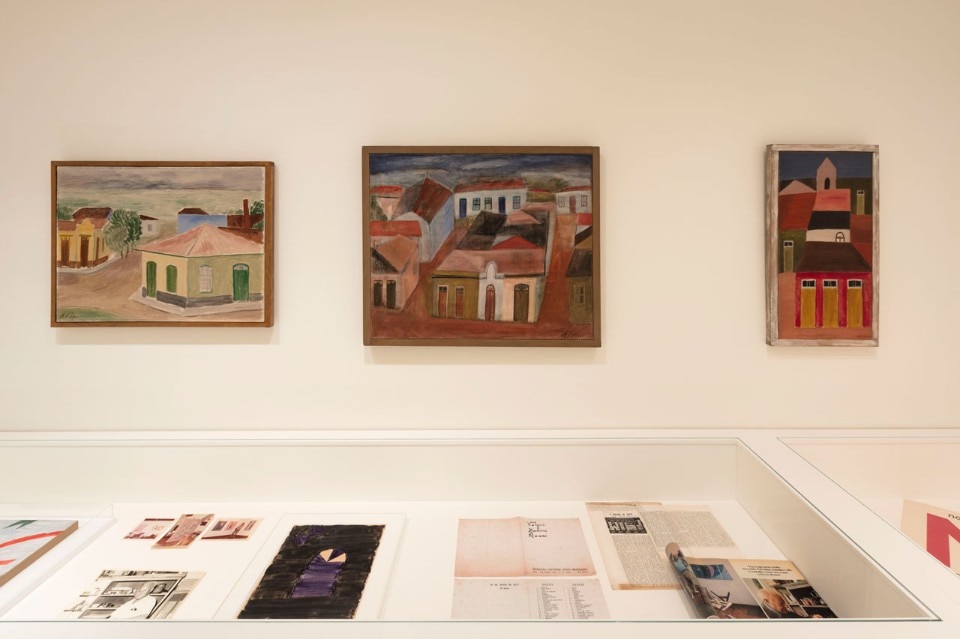
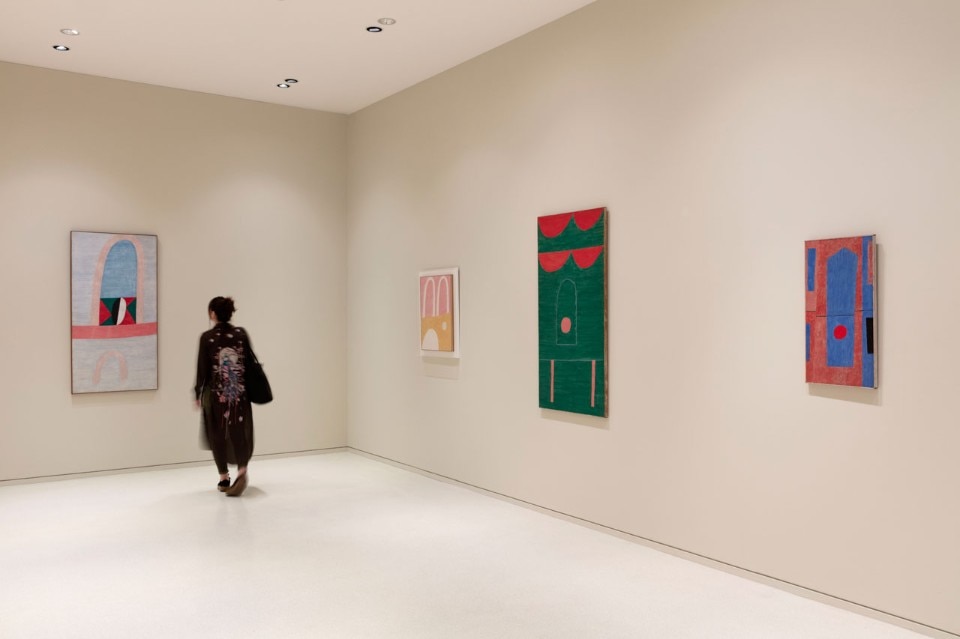
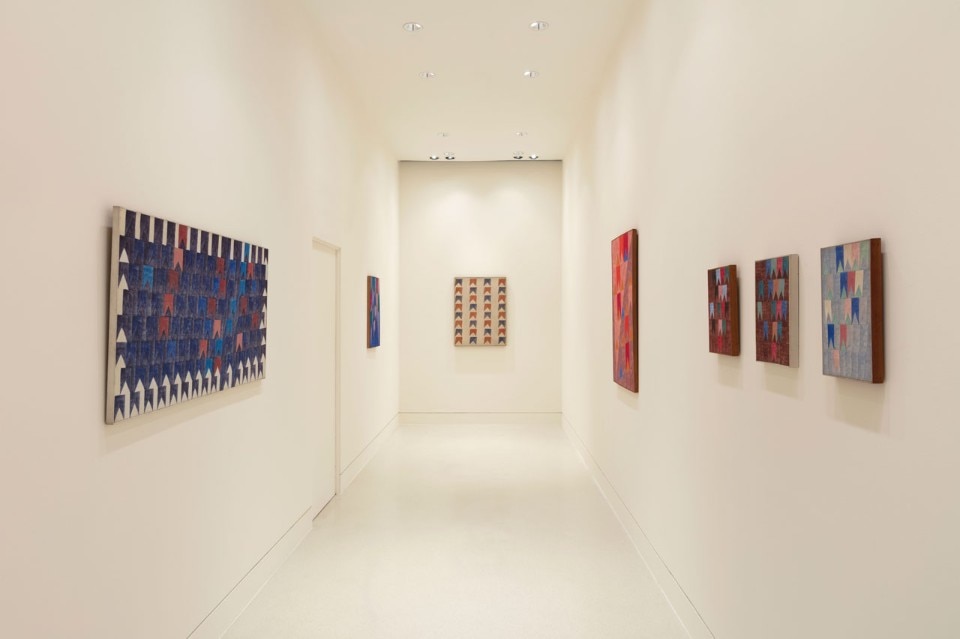
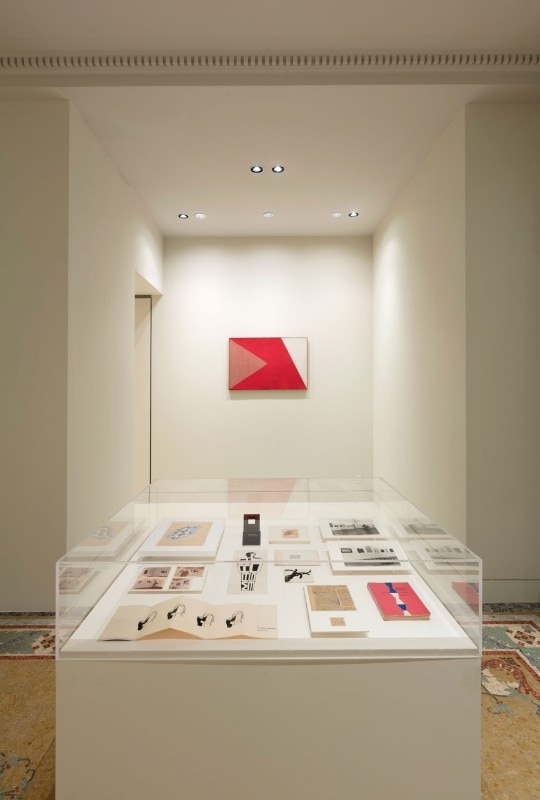
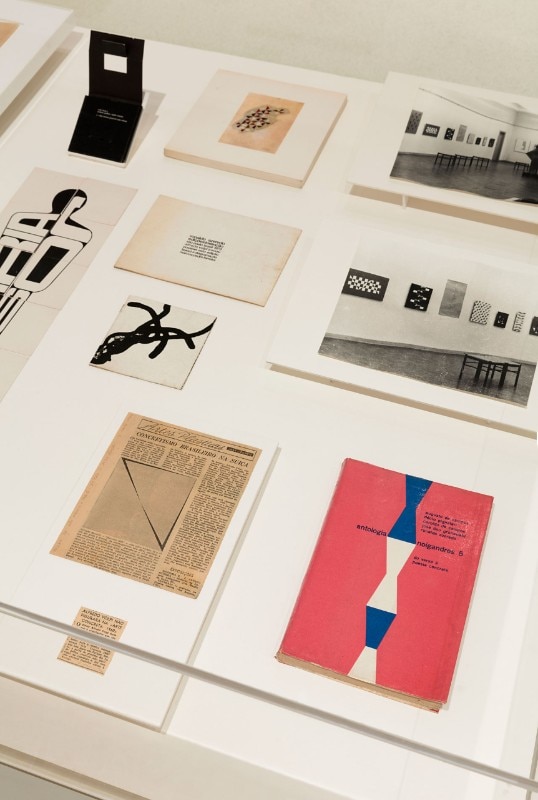
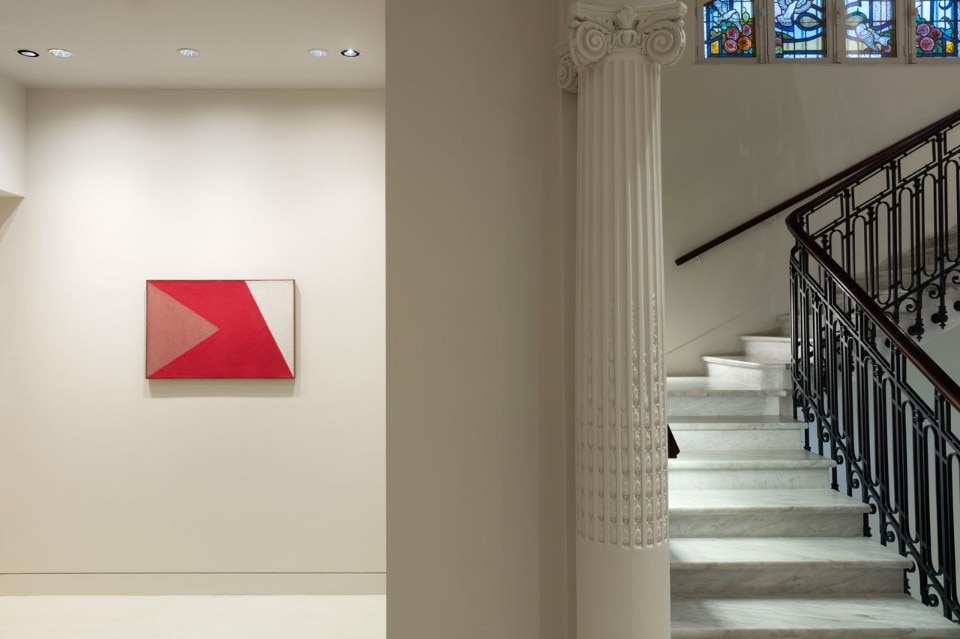
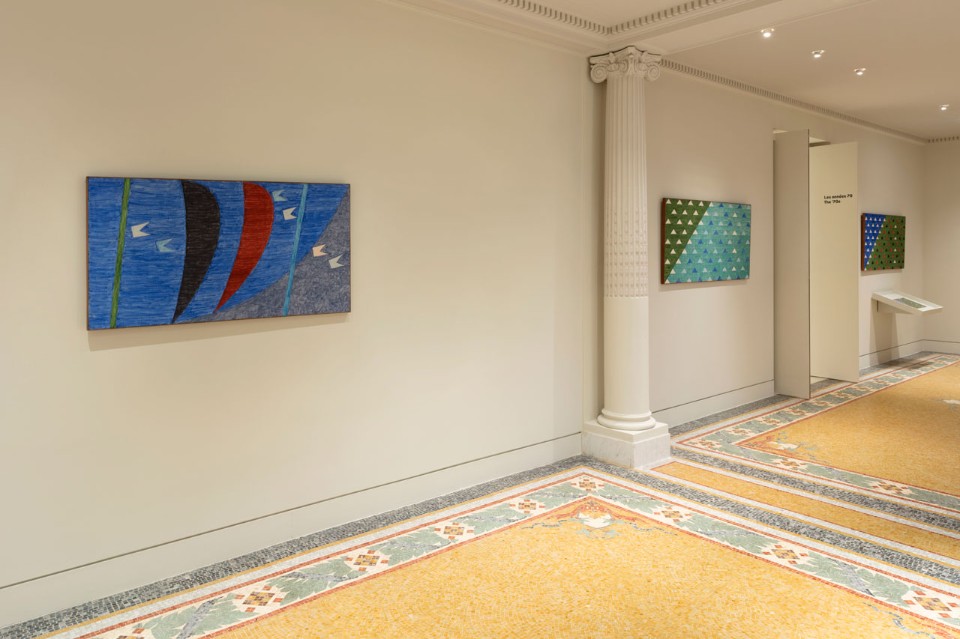
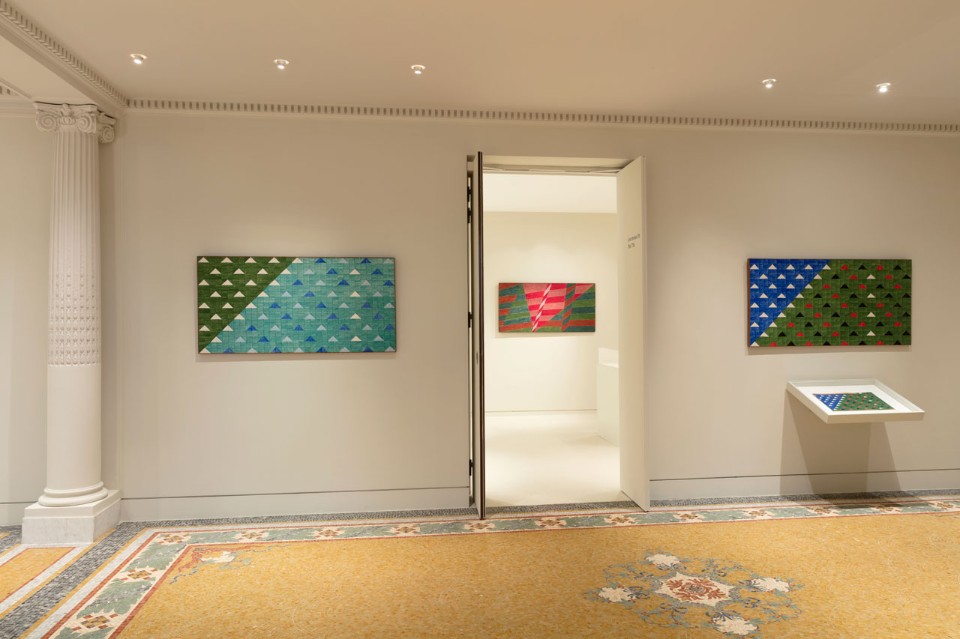
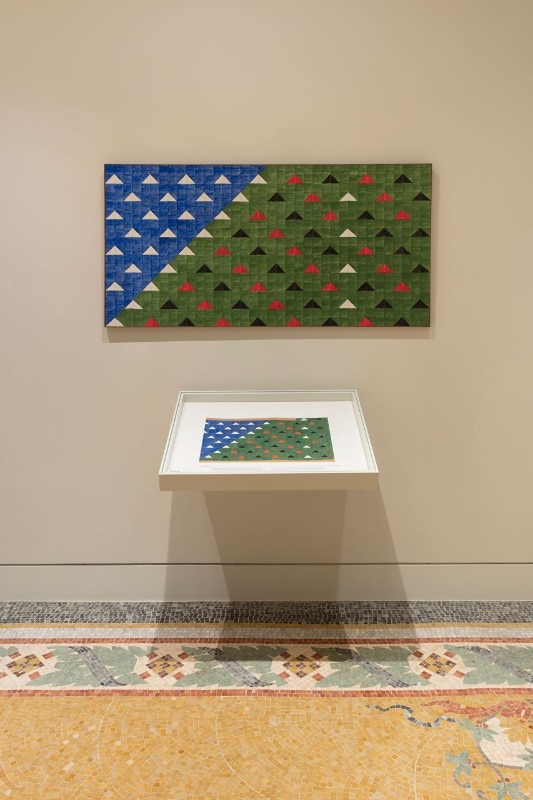
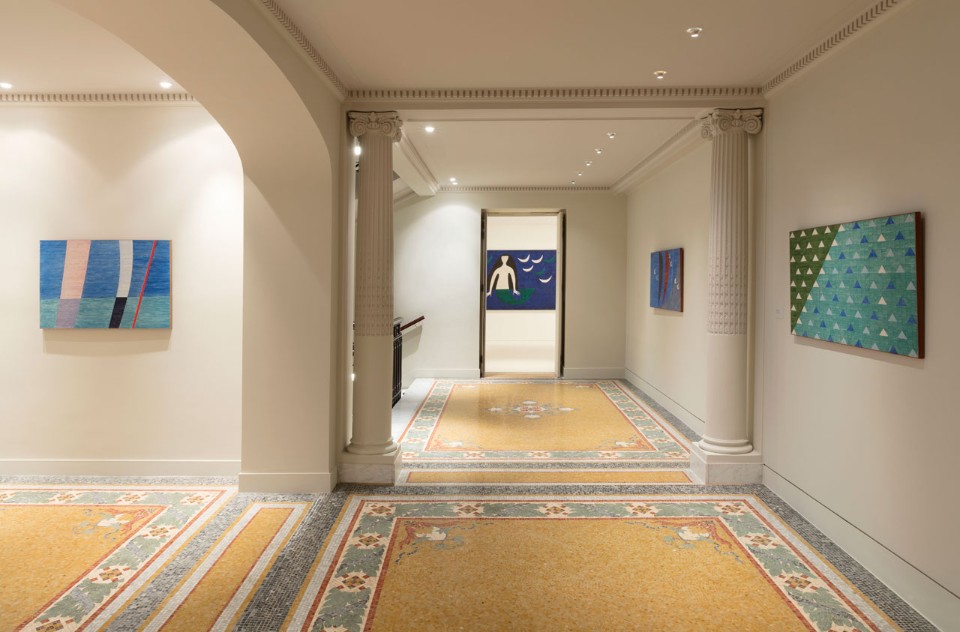













Alfredo Volpi was very closely tied to architecture. What is Volpi’s relationship with space? How does the layout of the exhibition relate to Volpi’s relationship with architecture?
I could not curate Volpi’s first European exhibition without presenting the history of his artistic career from a chronological point of view, but I have dedicated a room to the theme of the ultramarine “discovered” by Volpi in Padua on visiting the Scrovegni Chapel (apparently he went there more than 15 times), and one on the theme of the lances and standards which, in part, come from observation of the war frescoes by Paolo Uccello. In the exhibition, numerous displays containing historical documentation retrace the experiences and the works by Volpi for the developing Brasilia imagined by Oscar Niemeyer: the (later destroyed) fresco for the Igrejinha Nossa Senhotra de Fátima from 1958 and the great mural dedicated to Don Bosco for the Itamaraty Palace. One small anecdote, Volpi, not knowing what Don Bosco looked like, used Niemeyer’s features to depict the saint.
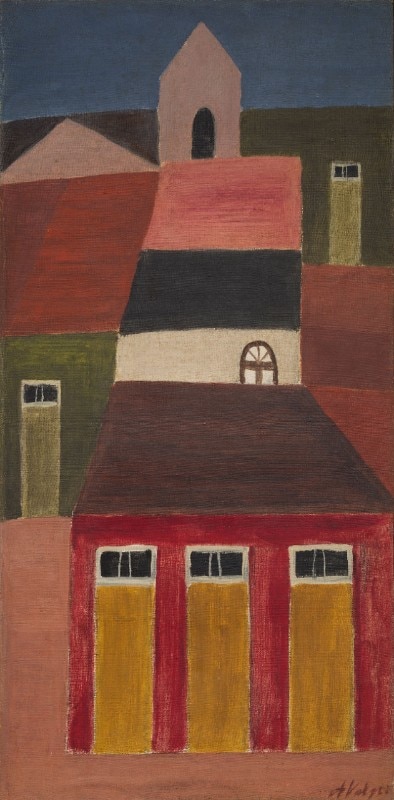
 View gallery
View gallery

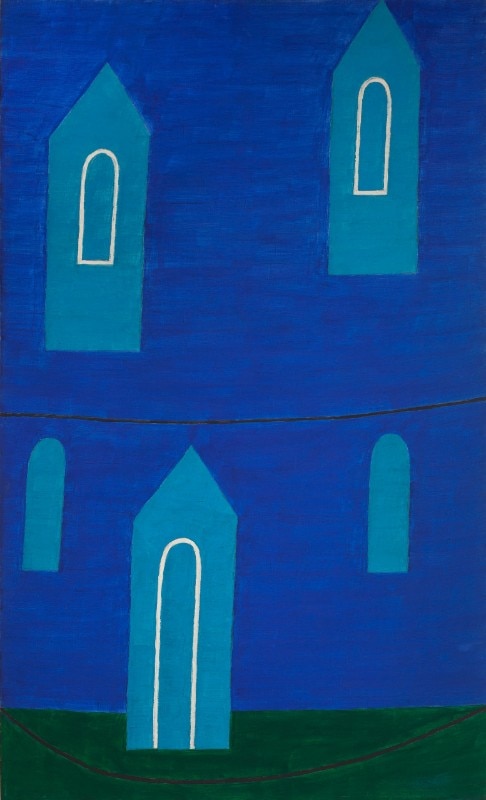
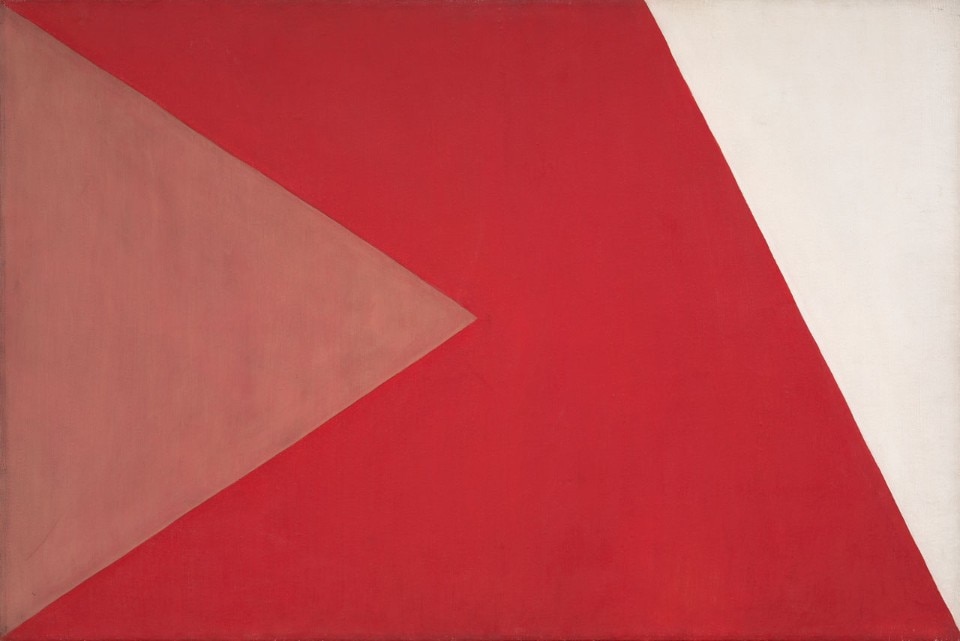
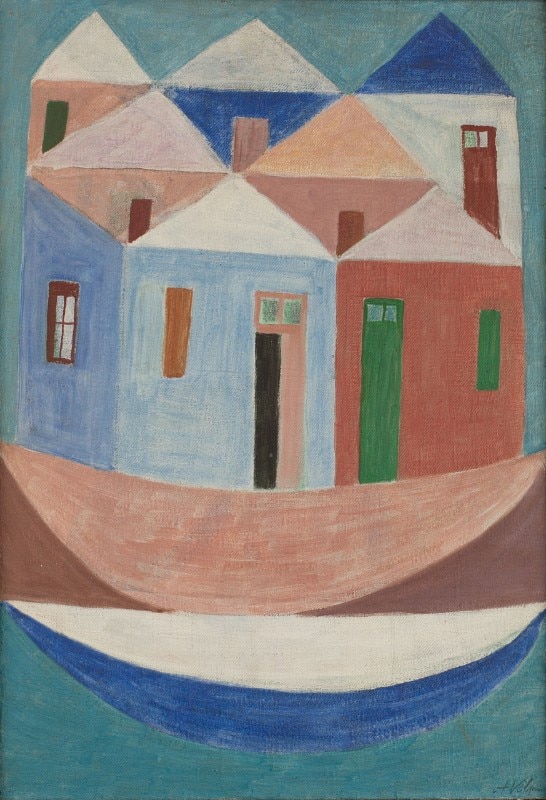
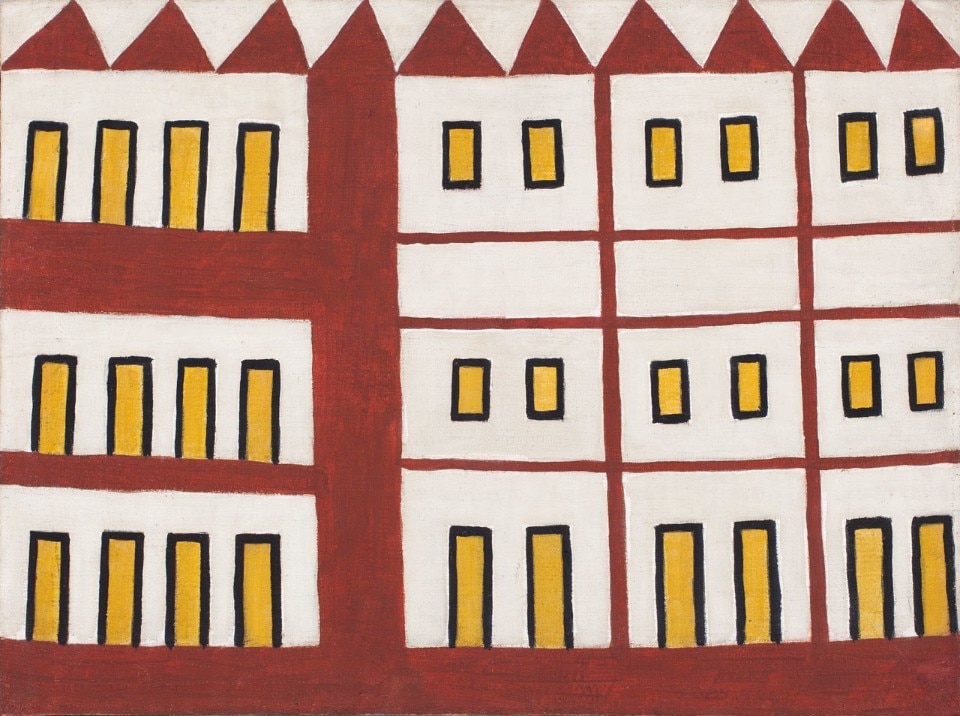
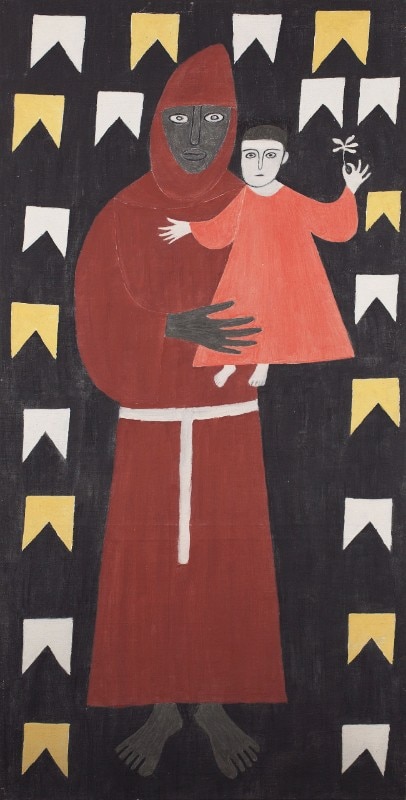
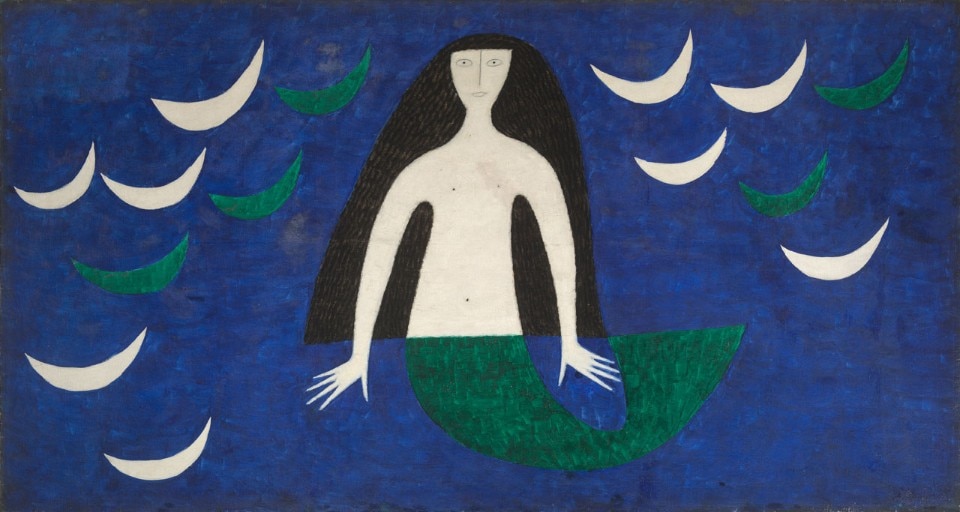
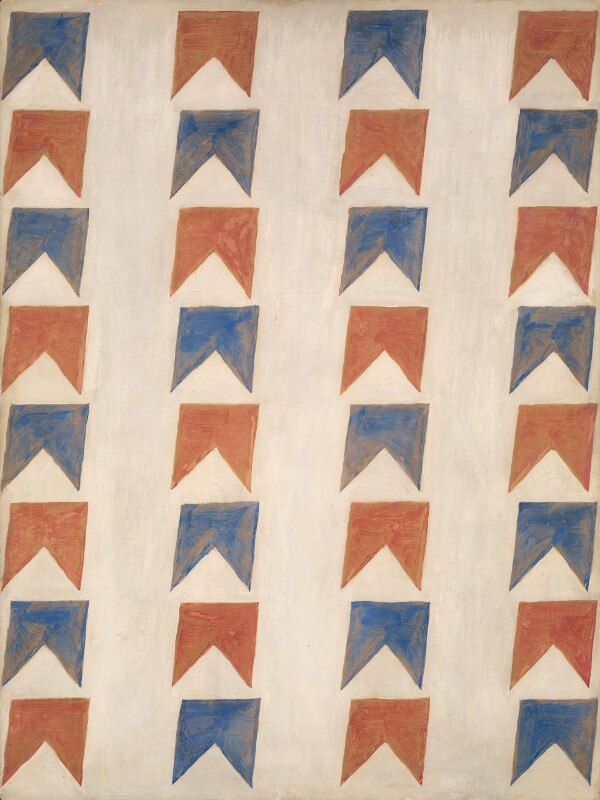
In Volpi’s work, one perceives the passing of time: through references to influences and styles or evoking physical presences without ever defining them in the final work. I think, for example, of the bandeirinhas as a geometric synthesis which recall, through the absence of the body, the vivacity and the transience of the festas juninas. How do you see absence or, at times dreamlike presence, of the representation of the body in Volpi’s work?
I think that Volpi wanted to depict the Brazil of the time, and he sought the perfect balance between saudade and excitement for the modern times. Subtracting space and concentrating on colour was, for him, a way to represent a moment on canvas. For Volpi, colour had a Proustian value, at the same time distancing him from reality. We can find, in his work, the prediction that the colourful houses of Cambuci would have been substituted by concrete skyscrapers. Volpi pained in his studio on an easel, each composition was the fruit of memory, an evanescent and unfocused image of details. In the 1950s and 1960s he produced various images of human figures, but apart from a few portraits of family members, the figures which fascinated him the most (Volpi was an atheist) were religious, due to their evocative nature and for their references to the popular culture of symbols.
Is there a work or series of works which is central to the exhibition “La Poétique de la Couleur”, and which is a point of departure for a specific reflection on Volpi’s work?
In the exhibition, every period has a central work. For the 1950s, a small picture depicting a group of coloured houses with pitched roofs against the outline of a boat. This painting, which leads us to Volpi’s late experience of the concrete art movement, seems like a detail from a fresco from the 1300s. For the 1960s, how can I not indicate the painting with which Volpi took part in the 1964 Venice Biennial, a vibrant composition of strokes with geometric archetypes of windows and doors. Another important moment in the exhibition is the room dedicated to the theme of the bandeirinhas. In the room, a composition of red and blue bunting on a white background dominates other variations and leads us to consider the nature of this symbol. Are they small flags or spaces left by the pitched roofs of the little houses of Cambuci? The geometry in Volpi’s work has a function which is more evocative than empirical and is the result of a single and attentive observation of his environment.
- Exhibition title:
- Alfredo Volpi, La poétique de la couleur
- Opening dates:
- 9 February – 20 May 2018
- Venue:
- NMNM-Villa Paloma
- Address:
- 56 boulevard du Jardin Exotique, Monte Carlo
- Curator:
- Cristiano Raimondi


